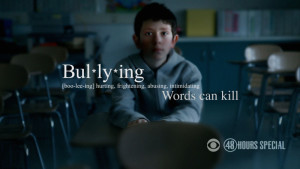William M. Silberg, is a strategic publishing and communications consultant with 30 years experience in health, medicine, health policy and science, in both the professional and consumer sectors.
“Do not go where the path may lead. Go instead where there is no path and leave a trail.” Ralph Waldo Emerson

Photo Credit: healthin30.com
Indulge me a moment while I ask you to join me in noting the far-too-soon passing of Dr. Bruce Dan,who died last week at age 64 of complications from a bone marrow transplant that he’d had last year as part of his treatment for leukemia.
Bruce was many things. A top CDC researcher,he was a leader of and often a spokesman for the team that helped to establish the link between toxic shock syndrome and the use of tampons, leading to design changes that no doubt saved lives. He then became a senior editor at JAMA, which is where I met him in the mid-1980s when I was in charge of science information for the AMA’s journals. He followed that with a fruitful stint as a broadcast journalist, first on TV in Chicago and later for the Medical News Network, a direct-to-physicians service that presaged many of the online medical information services common today. Along the way, he was awarded a prestigious Benton Fellowship at the University of Chicago, the CDC’s highest award for epidemic investigation and the US Public Health Service Commendation Medal.
This would have been plenty for anyone. But Bruce also was a great friend, a willing and patient mentor to me and many others, and he had an absolutely wicked sense of humor. He had a special affection for puns and pop-culture references, which I shared and which now and then found their way into his commentaries and editorials.
Bruce was an intellectually fearless participant in the weekly manuscript meetings at JAMA in which a room packed with incredibly smart editors weighed which papers, among the boxfuls (they came in the mail in those days) would make it into the precious editorial well (we worried about words on paper and page counts in those days).
Admittedly, sometimes these meetings were a tad dry for a non-physician, non-scientist like me. I was a journalist by training and though my expertise and point of view were highly valued, I certainly didn’t have the chops to weigh in on a manuscript’s technical worth or scientific or clinical worth. But I can’t recall a more enjoyable or educational experience than watching Bruce, his boss (and later mine) JAMA Editor-in-Chief George D. Lundberg, MD, and some of the other editors go at it in defending or picking apart this paper or that. It got heated sometimes, but it was the heat of expert intellectual passion, focused on trying to get the best in scientific and clinical research, policy and perspective to JAMA’s hundreds of thousands of readers (we called them readers in those days).
I missed Bruce greatly after he left JAMA, though I was fortunate enough to stay in touch during his time as a TV reporter and a Benton Fellow (my wife had been a Benton in a prior class, and we were only too happy to take advantage of alumni perks). And we stayed in touch, though increasingly infrequently, as Bruce pursued his other careers, including stints as a consultant and much sought-after speaker.
I was reminded by Bruce’s New York Times obituaryof other aspects of his remarkably diverse background. He earned his bachelor’s degree from MIT, in aeronautics of all things, then got a master’s degree from Purdue in biomedical engineering. Naturally, he decided to become a physician, gaining his MD from Vanderbilt in 1974.
Sometimes, when someone has a background and career than span so many different disciplines and interests, any one of which could easily have made for a highly successful professional life, it’s easy to wonder why he’d choose to move on to different challenges.
But the answer is just as easy, at least in Bruce’s case. Bruce was, at heart, a storyteller, in the very best sense of the words He knew the value of narrative as a powerful tool to inform, teach, lead and influence. He did this, consistently and exceptionally well, whether his target audience was researchers, clinicians, consumers, policymakers, his colleagues in those manuscript meetings, or folks like me who consider ourselves lucky to have had someone like him in our lives, if all too briefly.
Perhaps most remarkably, he even did it on his blog from the time he was diagnosed with leukemia until, with the help of his beloved wife, Lisa, an ABC correspondent whose generosity is something that my family and I know about first-hand, just before his untimely death.
I commend the blog to you as study in courage, grace, highly effective storytelling and numerous teachable moments. Although heartbreaking because we know the ending, it’s sober, optimistic, instructive, philosophical and often funny as hell – everything a great narrative should be.
William M. Silberg, is a strategic publishing






